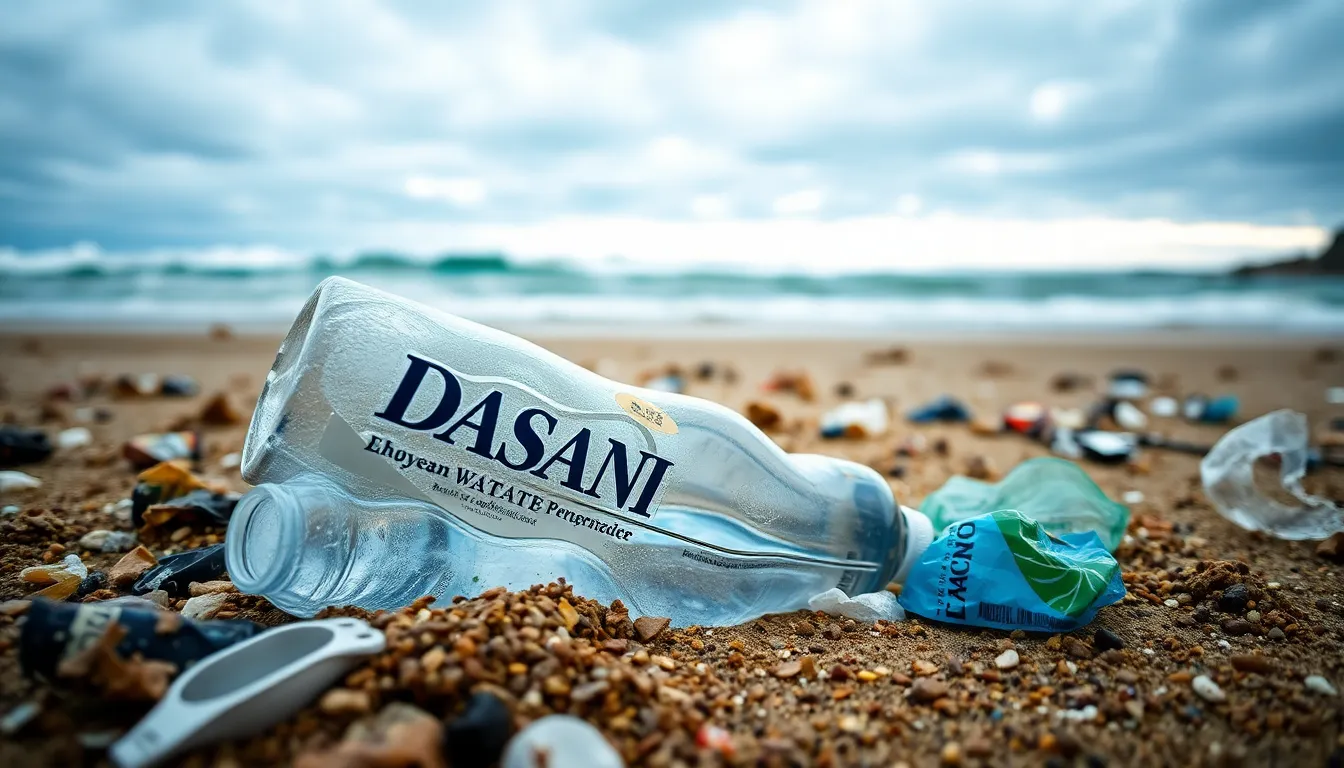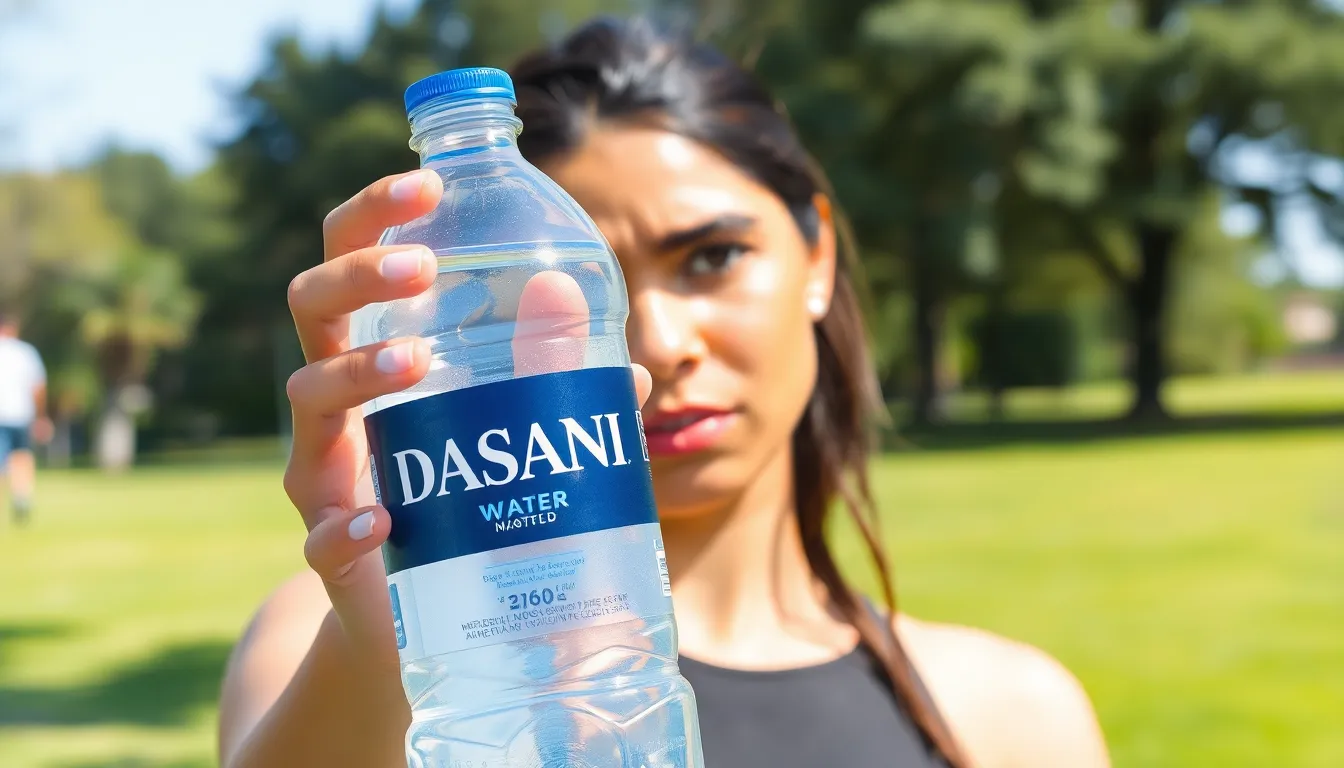When it comes to bottled water, Dasani often pops up as a go-to choice. But before you crack open that bottle, it’s worth asking: is this water really as refreshing as it seems? Beneath its sleek label and catchy marketing, there’s a surprising amount of controversy surrounding this popular brand.
From questionable sourcing to the infamous taste that some say resembles “a hint of sadness,” Dasani has earned its share of critics. It’s not just about hydration; it’s about what’s in that bottle and how it affects the planet. So grab a seat, because it’s time to dive into the murky waters of Dasani and uncover why this seemingly innocent beverage might not be as pure as it claims to be.
Table of Contents
ToggleUnderstanding Dasani Water
Dasani water originates from public water sources, including municipal supplies. The brand enhances its product with a unique blend of minerals such as potassium and magnesium for taste. Critics often raise concerns about the water’s flavor, describing it as lacking freshness compared to spring waters.
Packaging contributes significantly to the negative perception of Dasani. The plastic used for bottles is frequently criticized for its environmental impact. Many environmentalists argue that the brand’s reliance on bottled water exacerbates plastic waste issues.
Sourcing methods also draw scrutiny. Dasani uses reverse osmosis, a process that filters tap water, yet some consumers prefer water sourced directly from springs. Local communities impacted by water extraction have expressed concerns over potential depletion of local water resources.
Taste tests show varied preferences, with some indicating a dislike for Dasani’s flavor profile. This negativity can affect brand loyalty, leaving some consumers seeking alternatives.
In comparison, several other bottled water brands offer spring water, perceived as more natural. The difference in water source often leads consumers to favor brands that claim purity, thus reducing Dasani’s appeal.
Lastly, nutritional labeling appears on Dasani products, highlighting mineral content but sparking debates over transparency. While mineral enhancements aim to improve taste, some argue that this may distract consumers from the water’s origin. Such discussions contribute to the ongoing debate about Dasani’s quality and reputation in the bottled water market.
The Controversies Surrounding Dasani

Dasani’s presence in the bottled water market raises several concerns among consumers. Critics often highlight the ingredients used in Dasani water and their implications for health.
Bottled Water Ingredient Concerns
Dasani water’s source originates from municipal supplies, which some consider questionable. The addition of minerals, such as potassium and magnesium, aims to enhance taste, yet not everyone appreciates this flavoring. Taste tests consistently show that many consumers prefer spring water for its perceived purity. Nutritional labeling on Dasani bottles highlights these minerals, but this emphasis can obscure concerns about the water’s actual origins. Overall, skepticism about the water’s content persists.
Environmental Impact of Bottling
The environmental impact of bottled water also plays a crucial role in Dasani’s controversy. Plastic packaging contributes significantly to pollution and waste; millions of plastic bottles enter landfills annually. Critics point out that the production process of bottled water requires substantial resources, including water and energy. Communities near sourcing plants sometimes express concerns over potential depletion of local aquifers. As the demand for bottled water rises, its environmental footprint attracts more scrutiny each year.
Health Implications of Dasani Water
Concerns about Dasani water revolve around its quality and sourcing, impacting overall health.
Water Quality and Safety
Dasani originates from public water sources, which raises questions about its safety. Many consumers express skepticism about the purification process, including reverse osmosis, that removes impurities. Mineral additions designed to enhance taste may not compensate for this. Moreover, some studies indicate bottled water often lacks stringent safety regulations, making it less reliable than tap water. Research has shown that not all bottled water brands meet the same standards for contaminants. Consumers seeking high-quality hydration may prefer alternatives that guarantee purity and rigorous testing.
Plastic Bottles and Chemical Leaching
Plastic bottles used for Dasani can leach harmful chemicals into the water. BPA and other compounds found in plastic have raised health concerns, particularly regarding long-term exposure. As temperatures rise, the risk of leaching increases, potentially affecting water quality. Research indicates that certain chemicals can disrupt endocrine function, leading to various health issues. Many health experts recommend avoiding bottled water stored in plastic for extended periods. Sustainable alternatives, such as glass bottles or reusable containers, offer safer options for hydration.
Consumer Perception and Marketing Tactics
Dasani’s marketing strategies play a significant role in shaping consumer perceptions. Engaging advertisements often highlight refreshment and convenience, creating a favorable image. Many consumers perceive bottled water as a healthier option compared to sugary drinks, which drives demand.
Critics argue that the branding obscures the water’s origins. Originating from municipal sources, Dasani’s sourcing methods sometimes come under scrutiny. Community concerns arise when depletion of local water supplies is at stake, undermining trust among consumers.
Packaging also influences perceptions, particularly regarding environmental impacts. While Dasani promotes its product as pure, many individuals focus on the consequences of plastic waste. The contribution to landfill pollution through single-use bottles creates skepticism about the brand’s environmental responsibility.
Health concerns associated with Dasani stem from questions about safety. Consumers often debate the water’s purification process in contrast to tap water regulations. Some believe that buying bottled water ensures better quality, yet scientific studies suggest that bottled water may lack stringent safety checks.
Consumer feedback often reflects a preference for natural spring water. Comparisons with spring water highlight perceptions of purity and taste, giving competing brands an edge. As a result, Dasani faces challenges in convincing consumers that its products maintain health and quality standards.
The company’s nutritional labeling draws attention to added minerals, but this may not quell persistent doubts. Transparency about sourcing and production practices influences purchasing decisions, as knowledge about potential contaminants affects consumer trust. Overall, the interplay of advertising, environmental concerns, and health issues shapes how individuals view Dasani Water.
Dasani water faces significant scrutiny due to its sourcing methods and environmental impact. While marketed as a convenient and refreshing choice, many consumers question its taste and purity. Concerns about the quality of water sourced from municipal supplies and the potential health risks associated with plastic bottles further complicate its reputation. As awareness grows about the environmental consequences of bottled water, individuals increasingly seek alternatives that align with their values. The complexities surrounding Dasani’s image highlight the importance of informed consumer choices in today’s market.




